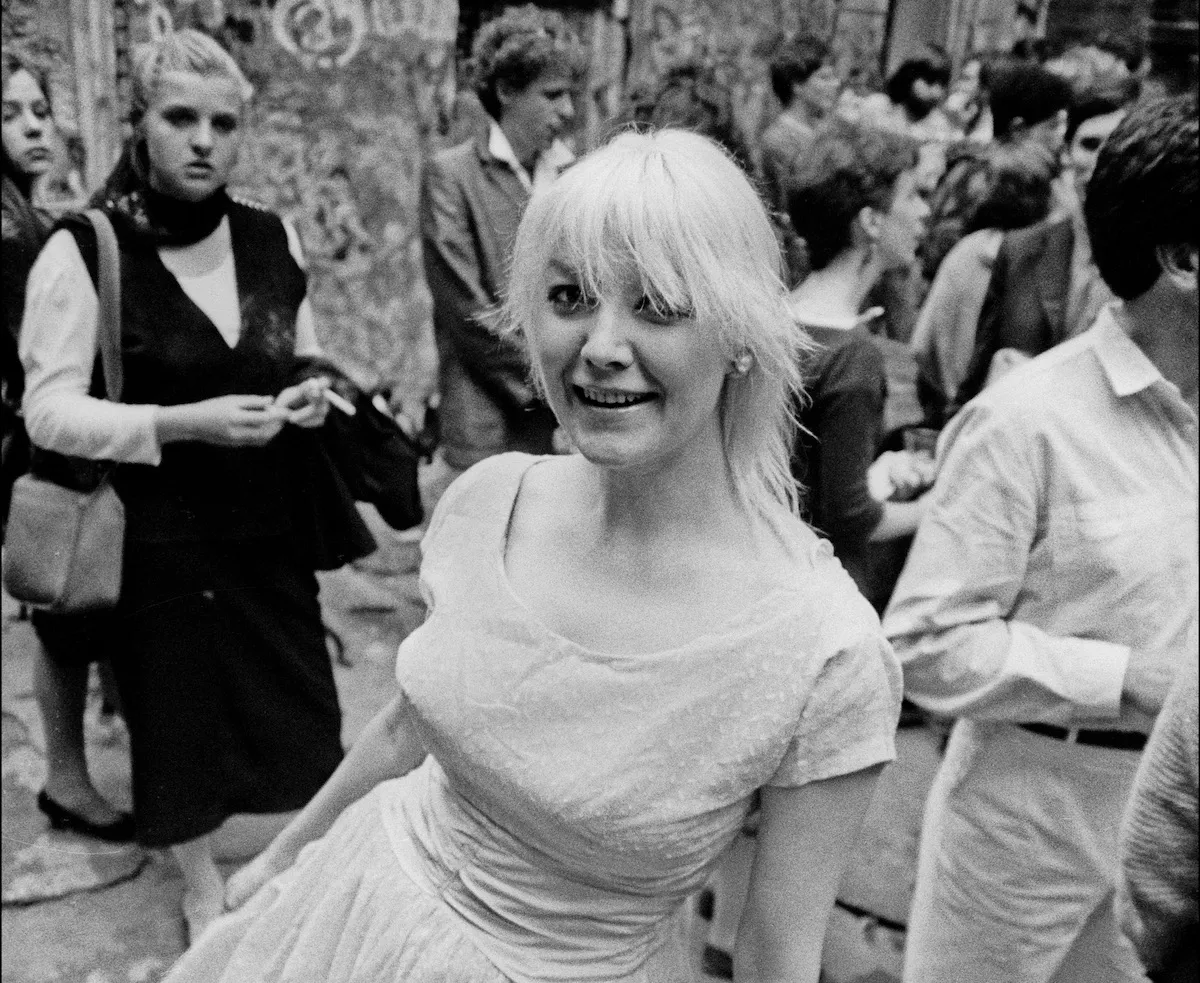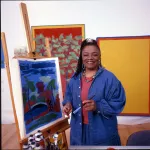
Patti Astor, a cofounder of Fun Gallery, the famed New York space that introduced a range of graffiti artists to the wider art world, has died at 74. Her death was announced on Tuesday by her official Instagram, which did not specify a cause.
Astor occupies a central place in the lore of 1980s New York. At a time when few others believed in the value of graffiti art, she staked a claim for it, elevating a multiracial cast of artists in a white world that had not accepted them before her.
In 1981, with Bill Stelling, Astor formed Fun Gallery, a scrappy space in the East Village with a much different edict from many New York galleries at the time. “It was white wine, white walls, white people; the art world was closed off and boring,” she said in an interview in 2013, the year she self-published a history of the gallery. “The success of the FUN Gallery was to open up the art world to everybody.”
Kenny Scharf lent the gallery its name; Jean-Michel Basquiat, Keith Haring, and Jane Dickson also showed there. But the gallery’s true achievement was in bringing fame to graffiti artists such as Futura, Lee Quiñones, Fab 5 Freddy, L.A. II, and Dondi White, who produced work that mainstream gallerists did not view as being art. Astor’s Fun Gallery changed that.
Fun Gallery, which started in a small storefront unit in the East Village that Astor and Stelling rented for $125 per month, lasted just a few years, shuttering in 1985 after sales dried up at its SoHo location. Yet by its end, the gallery had become a popular watering hole, and its programming had become closely watched by art critics. Today, its shows are considered to have defined an era.
Patricia Titchener was born in 1950 in Cincinnati, Ohio; both of her parents were physicians. Her father was a film lover, and she credited him with having spurred an interest in acting. She headed to San Francisco briefly, then left in 1968 to go to New York, where she took up the pseudonym Patti Astor and set out to become an actress. Since she could not afford to take classes at the hallowed Lee Strasberg Theatre & Film Institute, she took a job as a janitor there.
She moved to the East Village seven years later, and gravitated toward the underground scene, working with directors such as Amos Poe and Jamie Nares. In the former’s 1976 film Unmade Beds, about a photographer with a love for the French New Wave, Astor stars alongside Debbie Harry and Duncan Hannah. “I felt I had arrived,” Astor once said.
Fun Gallery started without much fanfare. The gallery lacked the sleek look of most commercial art spaces in New York, and that was part of its charm. “The walls were crumbling, but they just became this giant outdoor canvas,” Astor recalled.
Her ex-husband, Steven Kramer, did the first show, exhibiting 20 color pencil drawings, each for sale for $50. To her surprise, they all sold in one day. Then, in 1982, “the feeding frenzy really began,” as Charlie Ahearn once recalled in an Artforum tribute to the gallery. Kenny Scharf exhibited Whooaa Nelly!, one of his many paintings featuring cartoonish figures, and sold it.
Then Basquiat had a show, drawing celebrities such as critic Rene Ricard and musician Paul Simon to the opening, which teemed with people arriving in limos. Proof of that show’s importance arrived in 2022 when a Basquiat triptych from the exhibition headed to auction at Christie’s, which priced it at $36 million.
Ricard once praised the atmosphere of Fun Gallery as being confusing and amusing: “Walking into an art opening filled with eight-year-olds who are intimately conversant with the artist’s work is an estranging, transubstantiating experience for a grown-up art expert who’s scared to death of kids. It’s like getting out of the subway and not knowing if you’re headed uptown or downtown.”
Following Fun Gallery’s closure, Astor found that the East Village scene had changed too much and departed New York for California, where she continued to act. Working with Anita Rosenberg, she made Get Tux’d, a 1987 short that starred Ice-T, a rapper who had then just started to rise in stature.
The move to Los Angeles may have seemed an odd one for someone who had made their career in New York. Yet Golden State reported last year that the city fit her just right: “She was pleasantly surprised to find Hermosa’s budding art culture and feels she is exactly where she was destined to be.”
